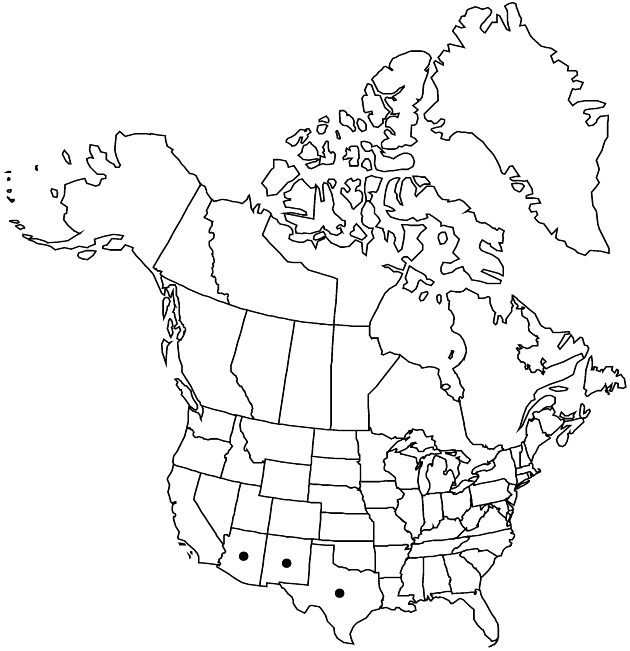Pectis filipes var. subnuda
Proc. Amer. Acad. Arts 33: 76. 1897.
Annuals, 5–40 cm; herbage spicy-scented. Stems erect or ascending, glabrous or puberulent. Leaves linear to narrowly elliptic, 10–60 × 0.5–5.5 mm, margins with 1–4 pairs of setae, faces glabrous or puberulent (dotted on margins with round oil-glands ca. 0.5 mm). Heads borne singly or in open, cymiform arrays. Peduncles 20–65 mm. Involucres cylindric. Phyllaries distinct, narrowly oblong to oblong-obovate, 3.5–6 mm (dotted with 0–2, subterminal oil-glands plus 0–3 pairs of submarginal oil-glands). Ray-florets 5; corollas 4–9 mm. Disc-florets 7–12; corollas 3–4 mm (weakly 2-lipped). Cypselae 2.5–4 mm, strigillose to short-pilose; pappi of 0–3 awns 3–4 mm usually with a shorter crown. 2n = 24.
Phenology: Flowering Jun–Nov.
Habitat: Deserts, grasslands, pine-oak-juniper woodlands, shrublands
Elevation: 1000–2000 m
Distribution

Ariz., N.Mex., Tex., Mexico (Chihuahua), Mexico (Sonora)
Discussion
Hybrids of var. subnuda and Pectis papposa var. papposa are known from southeastern Arizona. In northern Mexico, hybrids occur between P. filipes and other Pectis species.
Selected References
None.